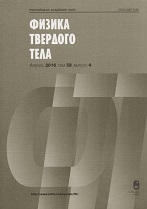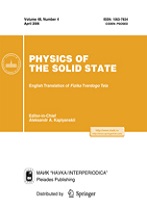| Fizika Tverdogo Tela |
|
|


|
|
|
This article is cited in 3 scientific papers (total in 3 papers) Phase transitions Structural heteroepitaxy during topochemical transformation of silicon to silicon carbide V. K. Egorova, E. V. Egorova, S. A. Kukushkinbcde, A. V. Osipovbcd a Institute of Microelectronics Technology and High-Purity Materials RAS, Chernogolovka, Moscow oblast, Russia b Institute of Problems of Mechanical Engineering, Russian Academy of Sciences, St. Petersburg c Federal State Budgetary Institution of Higher Education and Science Saint Petersburg National Research Academic University of the Russian Academy of Sciences, St. Petersburg d St. Petersburg National Research University of Information Technologies, Mechanics and Optics e Peter the Great St. Petersburg Polytechnic University
This publication is cited in the following 3 articles:
|


|
||||||||||||||||||||||||||||||||||||||||||||||||||||||||||

|
 Contact us:
Contact us: |
 Terms of Use Terms of Use
|
 Registration to the website Registration to the website |
 Logotypes Logotypes |
|










 Citation in format
Citation in format 